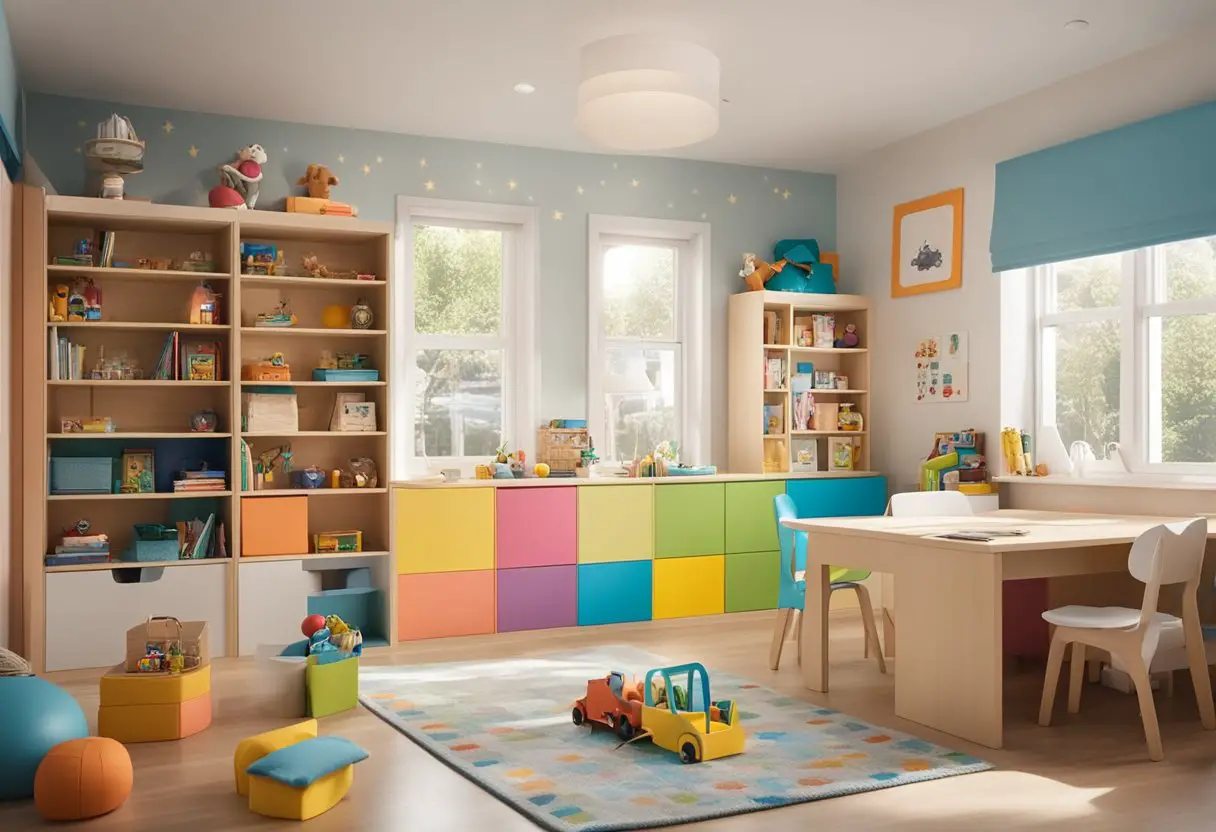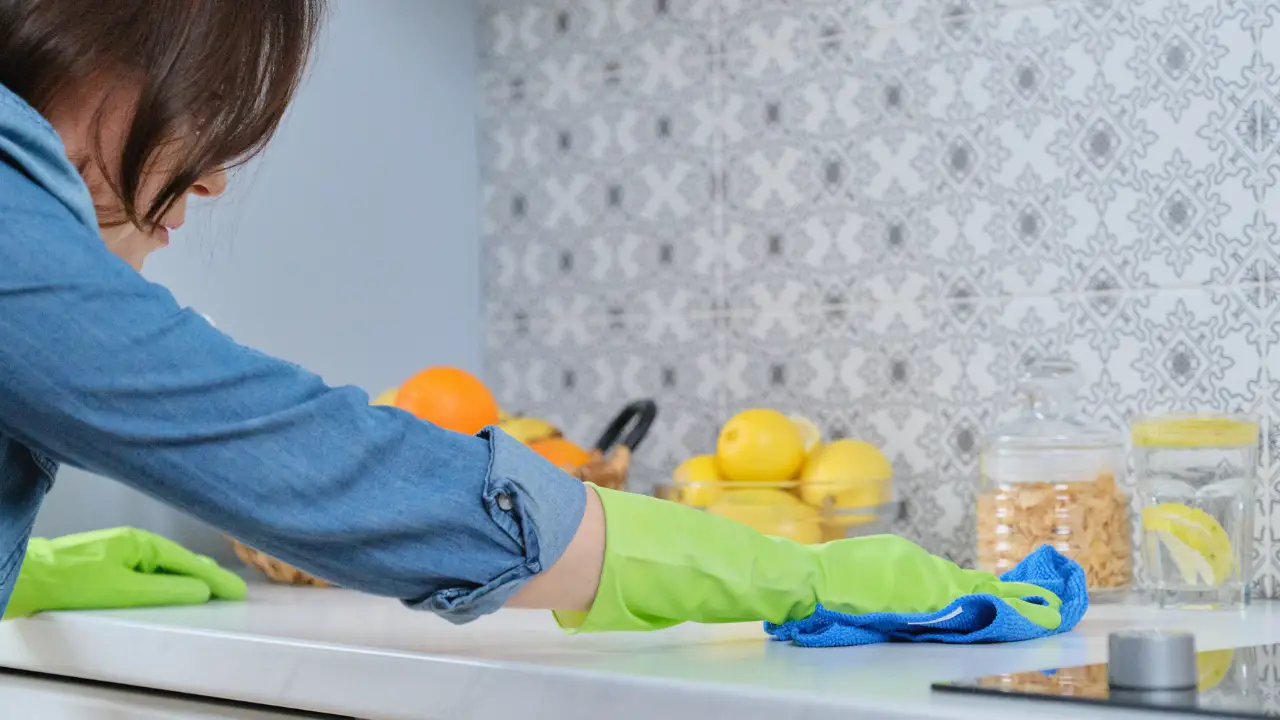Organizing your kids’ spaces can feel like an overwhelming task, but it doesn’t have to be. Whether you’re tackling a playroom, bedroom, or homework zone, there are plenty of strategies to help you create a functional and organised space that your kids will love.
When it comes to playrooms, the key is to create designated zones for different activities.
Consider setting up a reading nook, arts and crafts station, and a space for active play. Be sure to incorporate plenty of storage solutions, such as shelves, baskets, and bins, to keep toys and supplies organized and easy to find. Soft flooring and comfortable seating are also important for creating a cozy and inviting space.
Bedrooms are another area where organization is key. Start by decluttering and donating any items that your child no longer needs or uses. Then, consider investing in furniture with built-in storage, such as a bed with drawers or a desk with shelves. Encourage your child to keep their space tidy by setting up a system for putting away clothes, toys, and books. With a little effort, you can transform your child’s bedroom into a peaceful and organized sanctuary.
Designing Effective Playrooms

When it comes to designing an effective playroom for your kids, there are several factors to consider. From assessing the space and needs to choosing a theme or color scheme, furniture selection and safety, storage solutions, and zoning for play and learning, each decision plays a critical role in creating a space that is both functional and enjoyable for your children.
Assessing Space and Needs
Before you start designing your playroom, assess the space and needs of your children. Consider the age range of your children, the number of children you have, and the activities they enjoy.
Ensure that there is enough space for children to play and move around comfortably. You can also consider the lighting, flooring, and wall colors to create a welcoming and comfortable environment.
Choosing a Theme or Color Scheme
Choosing a theme or color scheme for your playroom can add a fun and playful touch to the space. You can choose a theme based on your children’s interests or a color scheme that complements the rest of your home.
You can also add wall decals, murals, or posters to create a fun and interactive space.
Furniture Selection and Safety
Selecting the right furniture is essential for creating a safe and functional playroom. Choose furniture that is age-appropriate, durable, and easy to clean. Ensure that the furniture is properly secured to prevent tipping and that there are no sharp edges or corners that could harm your children.
Storage Solutions and Organization
Storage is crucial for keeping your playroom organized and clutter-free. You can use bookshelves, cubbies, or storage bins to store toys, books, and other items. Labeling the storage containers can also help your children learn to organize and find their toys easily.
Zoning for Play and Learning
Creating different zones in your playroom can help your children play and learn in a more organized and structured way.
Create a reading nook, a craft area, a dress-up corner, or a building zone. Each zone should have the appropriate toys, furniture, and supplies to encourage your children to play and learn.
Creating Functional Bedrooms

When it comes to creating functional bedrooms for kids, there are a few key factors to consider. From bed selection and placement to incorporating study areas, there are many ways to optimize your child’s bedroom space for both comfort and productivity.
Bed Selection and Placement
Choosing the right bed for your child’s bedroom is crucial. Consider the size of the room and the needs of your child. A twin bed is a popular choice for smaller rooms, while a full or queen bed may be better suited for larger spaces. Once you have selected the right bed, think about placement. Placing the bed in the center of the room can create a focal point and make the room feel more spacious.
Maximizing Storage in Small Spaces
Storage is key in any bedroom, but especially in smaller spaces. Consider utilizing under-bed storage, hanging shelves, and closet organizers to maximize space. A dresser or armoire can also provide ample storage while doubling as a decorative piece.
Incorporating Study Areas
For older children, incorporating a study area can be a great way to promote productivity and focus. A desk or table with a comfortable chair and good lighting can create the perfect study environment. Consider adding a bulletin board or whiteboard for notes and reminders.
Decor and Personalization
Decorating and personalizing your child’s bedroom can make it feel like a special and inviting space. Consider incorporating your child’s favorite colors, patterns, and hobbies into the decor. Wall art, throw pillows, and bedding can all add personality and style to the room.
Setting Up Homework Zones

Homework zones are essential for creating a conducive learning environment for your kids. Here are some tips to help you set up a homework zone that will help your child focus and be productive.
Selecting the Right Location
When selecting a location for a homework zone, choose a spot that is quiet and free from distractions. Ideally, this should be a well-lit area with a comfortable chair and a desk or table. If your child has trouble concentrating, consider setting up the homework zone away from high-traffic areas of the house, such as the living room or kitchen.
Essential Supplies and Equipment
To ensure that your child has everything they need to complete their homework, stock the homework zone with essential supplies and equipment. This may include pencils, pens, paper, a calculator, rulers, and other school supplies. If your child needs access to a computer, make sure that it is set up in a location that is easy to access and use.
Minimizing Distractions
Distractions can make it difficult for your child to focus on their homework. To minimize distractions, consider setting up the homework zone in a quiet area of the house. You may also want to remove any unnecessary items from the area, such as toys or games. If your child is easily distracted by noise, consider using noise-cancelling headphones to help them focus.
Organizational Systems for Schoolwork
Organizational systems can help your child keep track of their schoolwork and stay on top of their assignments. Consider using a calendar or planner to help your child keep track of due dates and assignments. You may also want to set up a filing system for papers and other assignments. This can help your child stay organized and reduce stress.
Maintenance and Upkeep

Maintaining an organized space for kids is an ongoing process. Here are some strategies for keeping your kids’ spaces tidy and functional.
Daily Cleanup Routines
One of the most important things you can do to maintain an organized space is to establish a daily cleanup routine. Encourage your kids to put away toys and games when they’re finished playing with them. You can also set aside a specific time each day for cleanup, such as before dinner or bedtime. This will help prevent clutter from accumulating and make it easier to keep the space organized.
Involving Kids in Organizing
Getting your kids involved in the organizing process can help them develop good habits and take ownership of their space. Encourage them to help you sort and declutter items, and let them choose how to organize their belongings. You can also make it fun by using colorful storage bins or creating a reward system for good cleanup habits.
Seasonal Decluttering and Updates
As your kids grow and their interests change, it’s important to periodically declutter and update their space. Set aside time each season to go through their belongings and donate or discard items they no longer use or need. You can also update the space with new storage solutions or decor to reflect their changing interests and needs.
Innovative Ideas and Resources

Here are some innovative ideas and resources that can help you make the most of your space and keep your kids organized.
DIY Projects for Kids’ Spaces
DIY projects are a great way to add a personal touch to your kids’ spaces while also saving money. Some popular DIY projects for kids’ spaces include creating your own toy storage bins, building a loft bed with a desk underneath, or creating a chalkboard wall for your child to draw and write on. There are many online resources available with step-by-step instructions and materials lists for these types of projects.
Utilizing Vertical Spaces
When it comes to organizing kids’ spaces, it’s important to make use of every inch of available space. One way to do this is by utilizing vertical spaces. This means adding shelves, hooks, and other storage options to walls and ceilings. For example, you can install a pegboard on the wall to hang your child’s toys or add a bookshelf above the bed to store books and toys.
Multipurpose Furniture
Multipurpose furniture is a great way to save space in your kids’ rooms. Look for furniture that can serve multiple functions, such as a bed with built-in storage, a desk that doubles as a nightstand, or a play table that can be used for homework and crafts. This type of furniture can help you maximize your space while also providing your child with everything they need to be comfortable and organised.
Recommended Products and Brands
There are many products and brands that specialize in organizing kids’ spaces. Some popular options include IKEA, The Container Store, and Pottery Barn Kids. These companies offer a wide range of storage solutions, from toy bins and bookshelves to closet organizers and desk accessories. When shopping for organizing products, look for items that are durable, easy to use, and fit your child’s needs and preferences.




